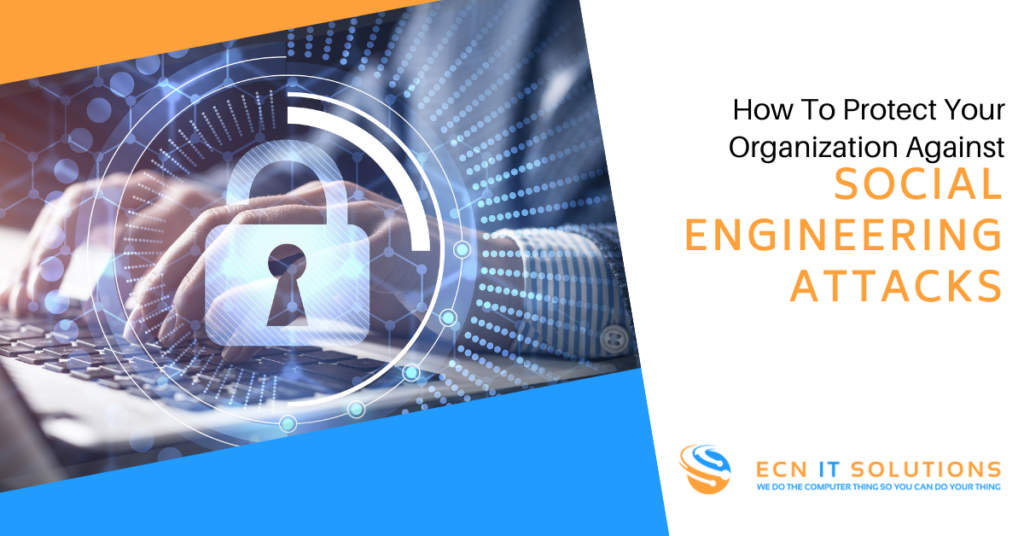Organizations face an increasing threat from cybercriminals who exploit human psychology rather than technical vulnerabilities. These attacks, known as social engineering, can be devastatingly effective and difficult to defend against. This article will explore the nature of social engineering attacks and provide comprehensive strategies to protect your organization from these insidious threats.
Understanding Social Engineering Attacks
Social engineering attacks rely on manipulating human behavior to gain unauthorized access to sensitive information or systems. Unlike traditional hacking methods that exploit software vulnerabilities, social engineering targets the human element—often considered the weakest link in cybersecurity.
These attacks can take many forms, from seemingly innocuous phone calls or emails to more elaborate schemes involving impersonation and psychological manipulation. The goal is always the same: to trick individuals into divulging confidential information or performing actions that compromise security.
Common Types Of Social Engineering Attacks
Phishing
Phishing remains one of the most prevalent forms of social engineering. Attackers send fraudulent emails or messages that appear to come from trusted sources, aiming to steal login credentials, financial information, or other sensitive data.
Pretexting
This involves creating a fabricated scenario to obtain information from a target. The attacker may impersonate a co-worker, IT support, or even a high-ranking executive to manipulate the victim into revealing confidential data.
Baiting
Baiting attacks lure victims with the promise of a reward or item of interest. This could be a physical item like a USB drive left in a public place or a digital offer for free software downloads that contain malware.
Developing A Robust Defense Strategy
Protecting your organization against social engineering attacks requires a multi-faceted approach that combines technology, policy, and human awareness.
Employee Education And Training
The first line of defense against social engineering is a well-informed workforce. Regular training sessions should be conducted to educate employees about:
- Recognizing common social engineering tactics
- The importance of verifying requests for sensitive information
- Proper handling of confidential data
- Reporting suspicious activities or communications
These training sessions should be engaging, interactive, and updated regularly to address emerging threats and tactics.
Implementing Strong Security Policies
Develop and enforce comprehensive security policies that address potential vulnerabilities to social engineering attacks. These policies should cover:
- Password management and multi-factor authentication
- Data classification and handling procedures
- Access control and least privilege principles
- Incident reporting and response protocols
Regularly review and update these policies to ensure they remain effective against evolving threats.
Leveraging Technology Solutions
While human awareness is crucial, technological safeguards play a vital role in defending against social engineering attacks. Consider implementing:
- Advanced email filtering and anti-phishing tools
- Network segmentation to limit the potential impact of a breach
- Endpoint detection and response (EDR) solutions
- Security information and event management (SIEM) systems
These technologies can help detect and prevent many social engineering attempts before they reach your employees.
Creating A Culture Of Security Awareness
Building a security-conscious culture within your organization is essential for long-term protection against social engineering attacks. This involves:
Encouraging Open Communication
Foster an environment where employees feel comfortable reporting suspicious activities or potential security breaches without fear of reprisal. This open communication can help identify and address threats quickly.
Leading By Example
Ensure that leadership and management teams actively participate in security training and demonstrate a commitment to following security protocols. This sets the tone for the entire organization.
Rewarding Security-Conscious Behavior
Consider implementing a reward system for employees who identify and report potential security threats. This positive reinforcement can help maintain vigilance across the organization.
Regular Testing And Assessment
To ensure the effectiveness of your social engineering defenses, conduct regular assessments and simulated attacks. These can include:
Phishing Simulations
Send harmless phishing emails to employees to test their ability to recognize and report suspicious communications. Use the results to identify areas for improvement in training and awareness programs.
Social Engineering Penetration Tests
Engage professional ethical hackers to attempt social engineering attacks on your organization. These tests can reveal vulnerabilities in your defenses and help refine your security strategies.
Security Audits
Regularly audit your security policies, procedures, and technological defenses to ensure they remain effective against current and emerging threats.
Incident Response And Recovery
Despite best efforts, social engineering attacks may occasionally succeed. Having a well-defined incident response plan is crucial for minimizing damage and recovering quickly. This plan should include:
- Clear roles and responsibilities for the incident response team
- Procedures for containing and eradicating the threat
- Communication protocols for notifying affected parties
- Steps for preserving evidence for potential legal action
- Processes for conducting post-incident analysis and implementing lessons learned
Regularly review and update this plan to ensure it remains relevant and effective.
Staying Informed About Emerging Threats
The landscape of social engineering attacks is constantly evolving. Stay informed about new tactics and trends by:
- Subscribing to reputable cybersecurity newsletters and blogs
- Participating in industry forums and conferences
- Engaging with cybersecurity professionals and organizations
- Monitoring threat intelligence feeds and reports
This ongoing education will help you anticipate and prepare for new types of social engineering attacks.
Invest in Protection Today
Protecting your organization against social engineering attacks requires a comprehensive, multi-layered approach that combines technology, policy, and human awareness. By implementing the strategies outlined in this article, you can significantly reduce your vulnerability to these insidious threats.
Remember, cybersecurity is an ongoing process, not a one-time effort. Continuously assess, adapt, and improve your defenses to stay ahead of evolving social engineering tactics. If you’re looking for expert guidance in developing a robust social engineering defense strategy, we at ECN IT Solutions are here to help. Our team of cybersecurity professionals can work with you to create a tailored approach that addresses your organization’s unique needs and challenges. Contact us today to learn more about how we can strengthen your defenses against social engineering attacks.

